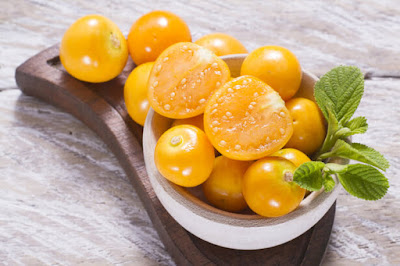The physalis or "Love in a cage", is a little little known fruit that has many qualities. American scientists have studied it to modify it genetically.
Low in calories and full of vitamins, this berry could become the next strawberry in the markets.
Physalis, this little-known fruit that could become the next strawberry
Thanks to science, physalis may well become trendy fruits. American scientists have indeed modified their DNA to make them bigger and easier to grow. Although deliciously acidulous, the physalis has never known the success it deserves and still remains too little known. Too bad when you know that this fruit, low in calories, is full of vitamins.
Commonly known as "Caged Love" or "Japanese Lantern," these orange, slightly acidic fruits "generally sell like hotcakes" when they are occasionally found in US markets, according to Dr. Lippman who conducted the study. The physalis is referred to as the "next strawberry" in the scientific team's publication. It is certain: thanks to some genetic adjustments, these fruits could be classified among the most popular berries (1).
In France, the physalis is grown in a greenhouse to protect it from the cold
In France, some market gardeners, especially in Creuse, know this well and already grow this fruit from Peru or Bolivia. If it is a perennial plant in South America, the physalis is mainly grown in greenhouse in Europe to protect it from the cold and prolong its production until December. It took nearly ten years to acclimate to the Creuse winters (2).
With the global warming of the planet, scientists want to take advantage of its major asset, drought resistance, to make it a fruit of the future. After sequencing and modifying the genetic code of this plant using the CRISPR-Cas9 tool, the researchers succeeded in making the plant more compact and producing more flowers and larger fruits. They are now working on the flavor and color of the fruit. They hope that their work will motivate new studies on others of these orphan crops (neglected and under-used) in order eventually to market them. Europe's market will certainly be very difficult to conquer!














0 comments:
Post a Comment